Chicago’s Longface has created an unhinged musical satire around an absurd universe of characters, while musically, the band employs clever guitars and elegant vocals to form a unique blend of twang, discord, and pop. Taking shape from the curious imaginings of Kentucky-born artist and songwriter, Anthony Focareto, he has stomped around the city’s haunts for more than a decade, living the nomadic plebian lifestyle parodied in his newest creation, Hillbilly Wit, which hit the streets in late October He is supported by a group of inspired musicians including Glenn Curran on guitar (Man Without a Head, co-founder of Sooper Records), Dillon Kelley on bass (Coaster, New Diet), and Kain Marzalado on drums (House of Normandie).
Focareto broadcasts the ills of modern society through the Longface character in an attempt to divine his freedom from them. The end result is equal parts confession and satire; a world where beer-drinking bumpkins, urban hipsters, and starving artists melt unevenly into a monstrous sideshow of rock n’ roll Americana. In heavier moments, Longface confronts social isolation, substance abuse, and economic stagnation. In lighter moments, he radiates a folksy playfulness and embraces the role of whimsical storyteller. He is haunted by demons, yearning for a return to grace, and trying to catch a break.
A medley of visual content accompanies the rollout of Hillbilly Wit. The band undertook a lengthy collaboration with artists, photographers, and filmmakers to illustrate its vision for the first time. Artist Jennifer Cronin painted iconic album covers. Photographer Natalie Escobedo captured otherworldly images. Visual artists Ryan Gregory, Nnamdi Ogbonnaya, and Mark Skala each made music videos to capture the universe on screen.
Ghettoblaster recently caught up with the band to ask about the complex project and the Longface universe.
How did the band originally come together?
Longface came about in the wake of the dissolution of previous projects, and the desire to keep making art with friends. Anthony [Focareto], Dillon [Kelley] and Glenn [Curran] played in New Diet, which terminated at the end of 2014. They started playing with drummer and longtime friend Kain [Marzalado], whose band House of Normandy had also just split up. They met up in the rehearsal space and kept going.
Did the artistic direction for Longface originate deliberately, or did it unveil itself as you began writing?
The artistic direction of Longface unveiled itself while recording vocal demos for the first EP [The Life and Death of Longface, 2015]. That EP was written quickly after the band came together in an effort to release material and continue playing shows and participating in the Chicago DIY community without a great delay. The chemistry of the band was new, and so the lyrics, although sung for the most part exclusively by Anthony, were constructed collaboratively.
Telling a story and riffing on archetypes was a natural means for creating lyrics in a group setting. The ideas came from a lot of laughing in the wee hours of late night recording sessions. The result was an EP that manifested the beginning of a fictional universe of characters. It was unclear at the time whether the next record would continue the theme.
When it came to writing Hillbily Wit, the project continued in a less narrative and more aesthetic fashion. The Longface universe has now become an inseparable element of the musical project’s identity.
This is a far less straightforward project than Focareto has done in the past. What is to credit for that?
There are a few elements to credit for that. First, Longface contained a new and fresh musical chemistry between bandmates; new lineup, new sound. The creative language of the band turned out to be far more collaborative and more a melting pot of ideas. There was less of a straightforward singer-songwriter approach from the outset.
Second, creatively, Anthony was more interested in being playful and exploring ideas through storytelling and whimsy instead of the traditional solipsistic lyrical motifs. Finally, and probably related, Anthony was reading a lot of science fiction stories and fairy tales at the inception of the Longface project.
Who is Longface and what story is he trying to tell?
Longface is a semi-autobiographical vehicle used to tell stories and explore ideas. On the one hand, the subject matter of the Longface universe is inspired by real-life experiences. Anthony, originally from Danville, Kentucky, sometimes writes from a perspective that envisions a return to rural simplicity as a resolve for various conflicts presented by life in Chicago. At the same time, the cultural and artistic opportunities in the city are an inseparable part of the artist’s identity. Longface is in some ways an embodiment of that tension.
On the other hand, the character framework opens a creative space to play with broader, less personal themes and social satires more generally.
What kind of music does he listen to and what does it do for his soul?
Longface listens to Alan Lomax recordings and the incoherent ramblings of CB radio, both of which enrich awareness of the people, experiences, and world around him.
The country/city dichotomy is something the band plays with thematically. What is the difference between those lifestyles/locales? What do you believe their common ground is?
City dwellers often strive to connect with nature while country dwellers are sometimes more connected to it. The pace of country and city living is different; the country is quieter and perhaps easier to find an escape. The city is more of a rat race, but has a cultural complexity and intellectual fodder that is stimulating in a different way. In the end, no matter where you go you have to deal with yourself. Similar unanswerable existential questions often define experience, love, work, the search for meaning, even if they’re being actualized in radically different social environments.
You worked with a variety of artists bringing Hillbilly Wit to life. Can you tell us about that?
Because the Longface project is so story driven, it was important to convey that in the strongest possible visual terms by way of the album art, associated photography, and videos. We are fortunate enough to be surrounded by talented friends and we both wanted and needed them to bring it all to life. We always intended the project to be strongly visual, and the process ultimately started to feedback on itself: the visual ideas influenced the music and the music influenced the visual aspect. An accounting of the contributors to the visual arts aspect is as follows:
Nnamdi Ogbonnaya made the “Howdy” animated video.
Ryan Gregory (Flint, Michigan) made the “Deep Fried American Dreams” video.
Mark Skala and Skalawag Production made the “Crescent Moon” video.
Jennifer Cronin made the album covers.
Natalie Escobedo did the photography.
Is there more to the Longface saga than we’ve already heard?
It’s an evolving project. We hope to play with different avenues for bringing the Longface universe to life in art and music. The challenge is to keep adopting new and exciting approaches while building upon and expanding the universe. It is not even clear if Longface is dead or alive at this point. The end of Hillbilly Wit, on “Hornswoggled,” also leaves the door open for a possible path out of the darkness: Uncle Jackie unearths a cache of old reel-to-reels recorded by Longface. We’re only beginning to scratch the surface of what might be on that tape.
You’re currently on tour. How are fans reacting to the LP?
The album cover seems to evoke different feelings and gets a range of reactions [laughter]. Our friends have been very receptive and excited for the album, which is always a good sign. We strive to leave newcomers pleasantly surprised, a goal which we have been able to achieve from time to time at our live shows.
What’s next?
Touring through 2018, being inspired by our friends, and trying to figure out what’s on the rest of those Longface reel-to-reels!
Longface – Facebook | Bandcamp | Sooper Records


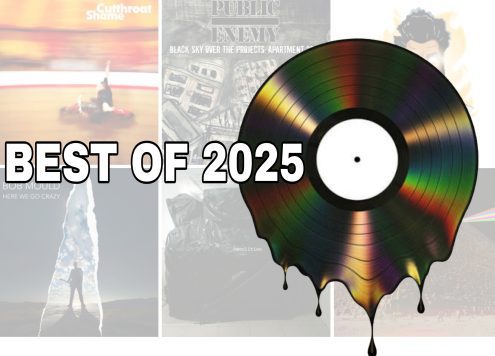

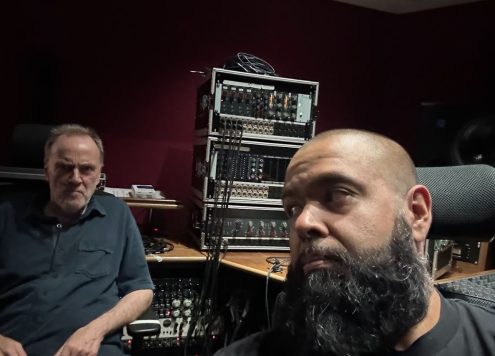
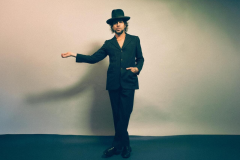
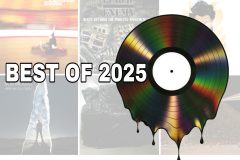
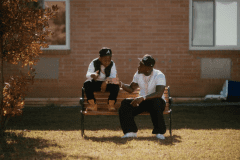


Social Media